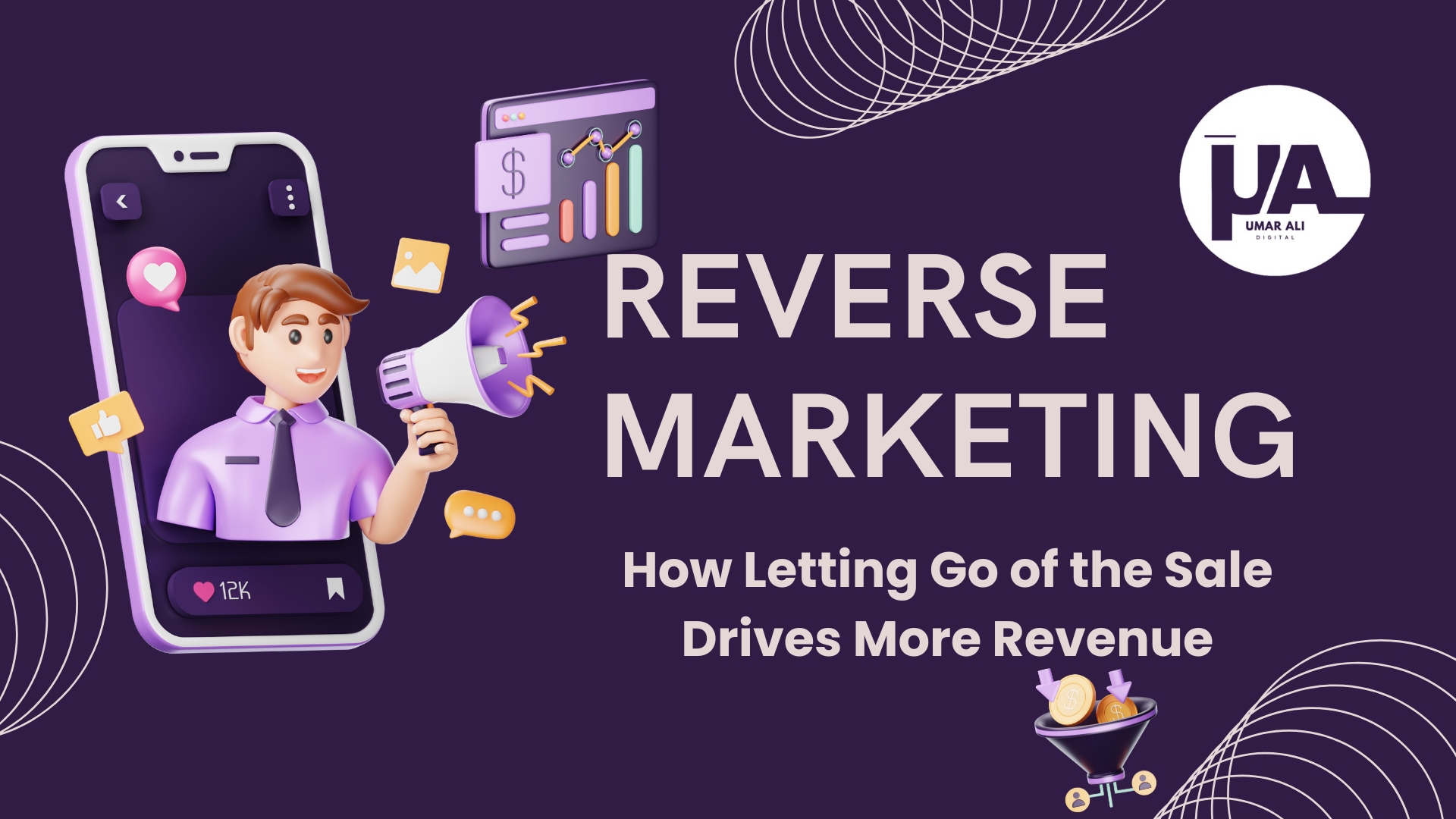Reverse Marketing: How Letting Go of the Sale Drives More Revenue

In the hyper-competitive business world, traditional hard-sell techniques are becoming less effective. Instead, reverse marketing—a strategy focused on storytelling and emotional connection rather than direct selling—is gaining momentum. By shifting the focus from pushing products to building relationships, businesses are finding that letting go of the sale often leads to more revenue in the long run.
The Core Philosophy of Reverse Marketing
At its heart, reverse marketing is about prioritizing the consumer’s needs over immediate sales goals. Rather than flooding potential customers with sales pitches, reverse marketing engages audiences through authentic narratives, useful content, and meaningful interactions. By addressing real-world problems and connecting emotionally, brands become trusted partners rather than just another vendor.
For instance, Patagonia excels in reverse marketing by sharing stories about environmental sustainability instead of merely promoting its outdoor gear. This approach not only aligns with its core values but also fosters a loyal customer base that advocates for the brand.
The Power of Storytelling
Humans are hardwired to respond to stories. A well-crafted narrative can captivate audiences, evoke emotions, and inspire action. Instead of listing features or benefits, storytelling helps brands show how their offerings fit into the lives of their customers.
Consider Airbnb’s “Made Possible by Hosts” campaign. Instead of promoting rental properties, it highlights heartfelt stories of travelers forming connections and creating memories. This emotional resonance transforms Airbnb from a booking platform into a brand associated with experiences and relationships, naturally driving customer loyalty.
Connection Over Conversion
Modern consumers value authenticity and are more likely to engage with brands that prioritize connection over conversion. Reverse marketing builds trust by focusing on:
- Transparency: Being open about your brand’s values and processes fosters credibility.
- Education: Offering insights or solutions without expecting immediate returns enhances goodwill.
- Community: Creating spaces for customers to share their stories or ideas strengthens relationships.
Brands like Dove leverage this strategy effectively. Their “Real Beauty” campaign celebrates inclusivity and empowers customers, positioning Dove as more than a beauty brand—it becomes a champion of self-confidence.
Measurable Benefits of Reverse Marketing
Although reverse marketing avoids direct sales tactics, its impact is measurable. Businesses see:
- Increased Customer Retention: Customers who feel valued are more likely to remain loyal.
- Stronger Word-of-Mouth Marketing: Satisfied customers become brand advocates, sharing positive stories organically.
- Enhanced Brand Equity: A focus on connection and storytelling elevates a brand’s reputation.
How to Implement Reverse Marketing
Here’s how you can incorporate reverse marketing into your strategy:
- Know Your Audience: Understand your customers’ values, pain points, and desires to create meaningful connections.
- Develop Authentic Content: Share stories that resonate with your audience and reflect your brand’s ethos.
- Engage Without Expectation: Focus on providing value through education, inspiration, or support rather than pushing for a sale.
- Measure Success Differently: Track engagement metrics like time spent on content, shares, and brand sentiment rather than just conversions.
Conclusion
Reverse marketing demonstrates that stepping back from aggressive sales techniques and focusing on authenticity, storytelling, and connection can drive greater long-term value. By letting go of the sale, businesses create deeper relationships with customers, foster loyalty, and ultimately achieve sustainable growth. In a world increasingly skeptical of traditional advertising, reverse marketing stands out as a refreshing and effective approach.